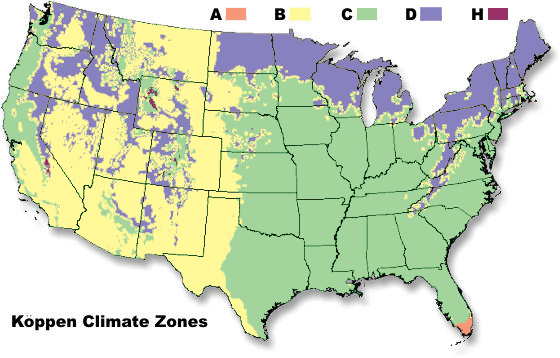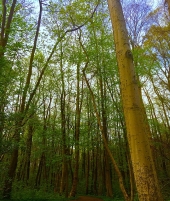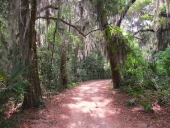








A) Tropical- hot and humid, average temperatures are greater than 64°F (18°C) year-round and there is more than 59 inches of precipitation each year
B) Dry- dry (not humid) and little precipitation
C) Temperate- warm and humid summers with thunderstorms and mild winters
D) Continental- warm to cool summers and very cold winters. In the winter, this zone can experience snowstorms, strong winds, and very cold temperatures—sometimes falling below -22°F (-30°C)!
E) Oceanic/Mediterranean- more average temperatures, not too hot in the summer or cold in the winter, usually has rainy winters and dry summers (source)



 5
5




When you reach your lowest point, you are open to the greatest change.
-Avatar Aang
 7
7




-JMAnder
"An object at rest cannot be stopped!"

 3
3




Nectarines (need to be curl resistant; I've heard some people getting enough heat to finally ripen these)
Hans Albert Quistorff, LMT projects on permies Hans Massage Qberry Farm magnet therapy gmail hquistorff




James Landreth wrote:Things that do fantastically well here in my experience include:
Mulberry (supposedly very drought tolerant, leaves and fruit are edible)
Asian Persimmon (I just heard that people's asian persimmons are dropping in summer around here unless they get supplemental water)
Medlars
Quince
Chestnut (I've been told that the blight doesn't proliferate here not because it isn't present, but because the summers are too dry and the blight requires a humid environment)
Butternuts (Butternut Canker also seems to need wet humid summers)
Black walnut, heartnut, English/Persian walnut
Hazelnut (only blight resistant varieties)
Apples
Pears, both Asian and European (to some degree; they've had big issues with rust and such lately)
Peaches (curl resistant cultivars only such as Frost and Avalon)
Plums of almost all kinds (both Japanese and European)
Edible Hawthorn
Cherries (if you can keep the birds off of them)
Pawpaw (somewhat tricky to establish; needs shadecloth if young and out in the open)
American Persimmon (they do well here but the only friend who has tried them didn't like the flavor)
Goumi berries (one of my favorites)
Autumn Olive
Linden (littleleaf; silverleaf is supposedly toxic to bumblebees)
Locust trees
Currants, gooseberries, jostaberries
Grapes
Kiwis (apparently fuzzy kiwi stores very well)
Figs (certain cultivars only; strangely enough desert king is most reliable)
Serviceberry
Aronia berry
Things that are experimental here:
Apricots (Puget Gold, Montrose, Hoyt Montrose)
Nectarines (need to be curl resistant; I've heard some people getting enough heat to finally ripen these)
Yuzu (hardy citrus)
Loquat
Olive (arbequina in particular is popular here now)
Pomegranate
Silverberry (hardy to this area but still uncertain if it's tasty/if it will successfully set fruit and ripen here, either way it should be great for fall bee forage if we have a mild fall!)
Siberian pea shrub (doesn't seem to like our climate; grows slowly and reluctantly)
Akebia (a very strange fruit, and that's really saying something coming from me)
Jujube (I've heard mixed things about getting them to ripen)
Almond trees (certain cultivars hardy to here but remains to be seen if they are disease resistant. Certain varieties that do well here are bitter and need processing to remove the cyanide)
Pecans (need more heat traditionally but may ripen with climate change)
Yellowhorn
Nut pines (should do well but haven’t heard much about them here)
Things I don't like growing but can be grown here:
Lingonberries
Blueberries
Raspberries
Strawberries
I find that all of these (the above four) require lots of watering even beyond establishment, and strawberries and lingonberries particularly don't like weed competition and seem to get baked in the sun

Striving to grow things as naturally, simply, and cheaply as possible! 
My YouTube channel




Joseph Michael Anderson wrote:wild and,unstoppable

Striving to grow things as naturally, simply, and cheaply as possible! 
My YouTube channel




Hans Quistorff wrote:I agree with the list in the first post but would like to add these notes:
Nectarines (need to be curl resistant; I've heard some people getting enough heat to finally ripen these)
I have had good success with seedling peaches and nectarines by using a high tunnel for rain and mist protection which seems to be the main factor in prorogation of the peach leaf curl. also having mason bees nesting in the high tunnel they are available for early pollination and I get an earlier crop than others in my area which gives me a sales advantage.
Puget sound islands, peninsulas, bays, and gulches provide many micro climates. For example artichokes and figs will thrive here when located where freezing air will flow down to the bay and push warm air up the adjoining slope where they are located.
I am located on a peninsula on what used to be a shoreline before the water level dropped so I do not get the direct warming of the water but the cold still flows down to the clay bottom field with radiant cooling on clear nights.
Many winters would be rated at 8b most 8a or 7b but historically from my youth in the 1940's 7a at my property. The current pattern is one week of freezing nights in December and another in January so the heating of a greenhouse is not challenging and a high tunnel will get many sensitive plants through the winter.
Striving to grow things as naturally, simply, and cheaply as possible! 
My YouTube channel
 1
1




 2
2




Be the change you wish to see in the world
 1
1




When you reach your lowest point, you are open to the greatest change.
-Avatar Aang




James Landreth wrote:I live about forty-five minutes away from Olympia. Paw paws are tough to establish but do well once they are. My advice is to plant lots of seedlings (they're cheaper from places like burnt ridge, plus pawpaw grows well from seed) and don't give up! They're absolutely delicious and a novelty. Use shadecloth over them if the site is very sunny.
Be the change you wish to see in the world
 1
1




When you reach your lowest point, you are open to the greatest change.
-Avatar Aang

|
Why is the word "abbreviation" so long? And this ad is so short?
Support permies and give beautiful gifts to gardeners: permaculture playing cards.
https://gardener-gift.com/
|









